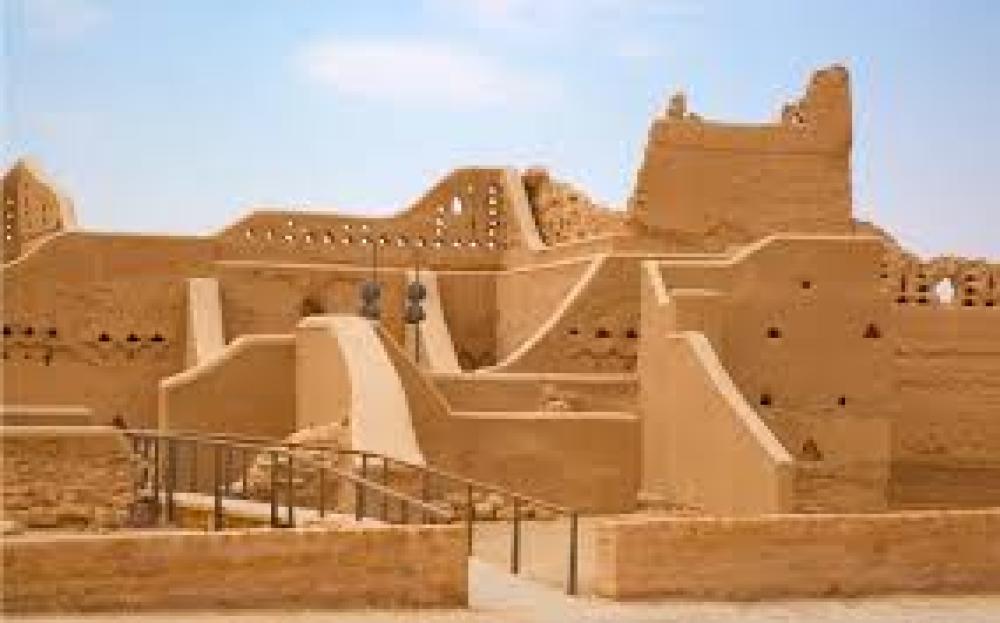Diriyah is not just a piece of land; It is a symbol of glory and pride, celebrated as the capital of the First Saudi State. Located in the historical heart of Wadi Hanifah in the Riyadh region, Diriyah covers an area of 2,020 km².
The name “Diriyah” is derived from its people—the inhabitants of the ancient fortress known as Al-Dir’ , who belonged to a tribe that settled in Wadi Hanifah for many centuries. Diriyah was founded in 850 AH when Mani' bin Rabi'ah Al-Muraydi, the ancestor of the Saudi royal family, migrated from eastern Arabia to Wadi Hanifah in response to an invitation from a relative known as Ibn Dir', the local leader. Upon his arrival, Ibn Dir' granted him the lands of Al-Malibid and Ghusaybah. Although historical accounts vary, some trace the name “Diriyah” to the ancient settlement near Al-Qatif, while others attribute it directly to Ibn Dir’.
King Salman bin Abdulaziz Al Saud confirmed this historical narrative in his book “The Historical and Intellectual Foundations of the Saudi State” , explaining that groups of the Al-Muraydi lineage returned to the region of Al-Yamamah upon Ibn Dir’s invitation, who allocated Al-Malibid and Ghusaybah to them. Since then, Diriyah has become a significant political center that paved the way for the establishment of the Saudi state.
The Rise of Diriyah and Its Role in the Formation of the Saudi State
Thriving along the banks of Wadi Hanifah, Diriyah emerged as one of the most prominent cities in Najd during the 12th and 13th centuries AH. It became a pivotal turning point in the region's history—the capital from which the First Saudi State expanded its influence across the Arabian Peninsula.
By 1139 AH / 1727 CE, Diriyah had become the capital of the First Saudi State, making it a strategic target for rival powers, particularly the Ottoman Empire.
The Siege of Diriyah and Its Great Sacrifices
In 1233 AH, Diriyah faced one of its greatest challenges when Ottoman forces, led by the French commander “Sefu Qassem,” marched toward it with a force of nearly 20,000 soldiers—equipped with artillery, military engineers, physicians, and Italian experts.
The Ottomans began their siege by relentlessly bombarding Diriyah with heavy artillery. The siege lasted nearly two months, during which the Saudis displayed remarkable bravery, especially in the Battle of Samhan , fiercely defending the southern approaches to the city.
As the siege intensified and food and water dwindled, the suffering of the population worsened. This pushed Imam Abdullah bin Saud to negotiate with Ibrahim Pasha, seeking safety for the people of Diriyah. An agreement was reached: Imam Abdullah would surrender himself and the city in return for the protection of its inhabitants and their property.
However, Ibrahim Pasha soon violated the treaty. Imam Abdullah was taken to Istanbul and executed, and Ottoman soldiers committed horrific massacres, killing nearly 1,300 people, destroying homes, and burning farms.
It was one of the darkest tragedies in Arabian history.
Yet Diriyah's legacy endured, and its name remained engraved in history. It later regained its prominence with the establishment of the modern Saudi state in 1319 AH / 1901 CE.
Diriyah on the UNESCO World Heritage List
The At-Turaif district was inscribed on the UNESCO World Heritage List due to its exceptional historical significance, including landmarks such as Al-Bujairi and At-Turaif , the heart of the First Saudi State.
This global recognition reflects Diriyah's cultural and historical importance and emphasizes the need to preserve its rich heritage for future generations.
Diriyah Today… A Leading Cultural and Tourism Destination
Today, Diriyah stands as a major cultural and tourism destination. As part of Saudi Vision 2030, large-scale efforts are underway to transform it into a global cultural center that reflects Saudi heritage and narrates the story of the nation’s founding and resilience.
Despite the hardships it endured, Diriyah remains a proud testament to its enduring history—not diminished by time, but ever brighter in the memory of the nation.

